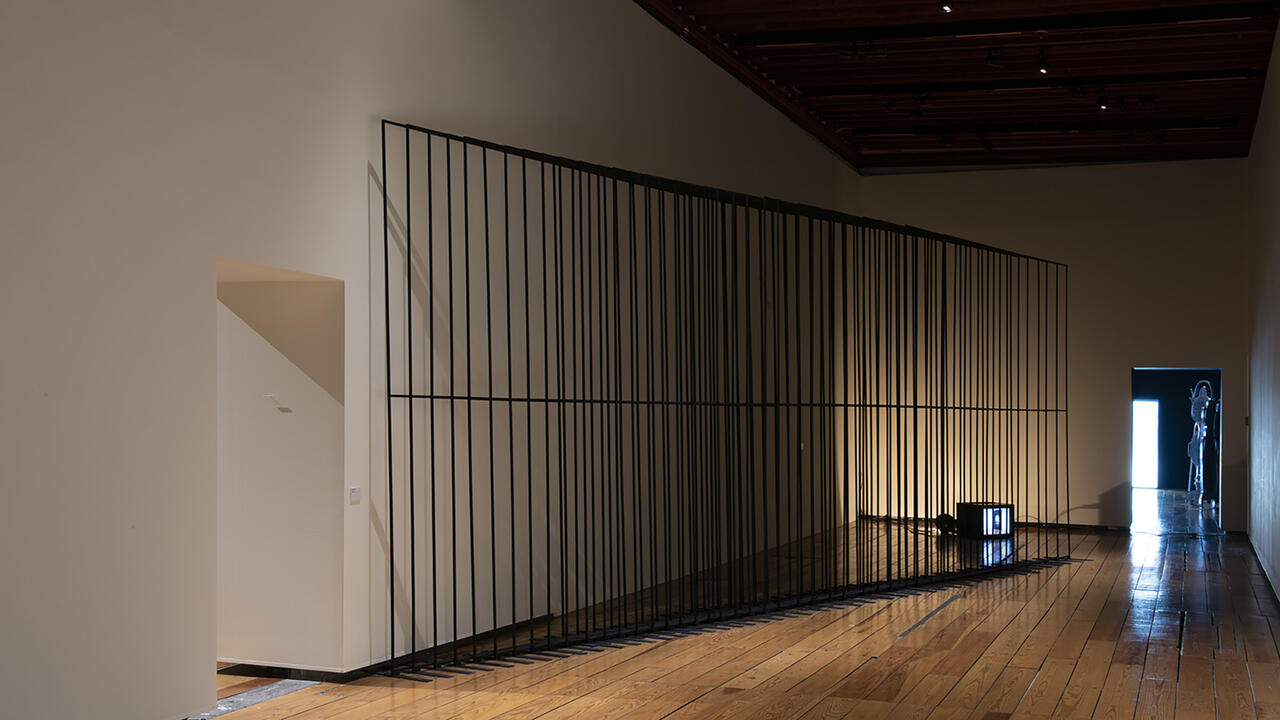Atom Egoyan
'Behind every hot new working computer is a trail of bodies', writes Steward Brand in The Clock of the Long Now (1999): '... extinct computers, extinct storage media, extinct applications, extinct files.' Atom Egoyan's Steenbeckett (2002), installed in the former Museum of Mankind in central London, addressed this issue of technological obsolescence, taking Samuel Beckett's Krapp's Last Tape (1958) as its starting point and muse. In Steenbeckett, Egoyan's own film of Beckett's play was employed as one of several linked elements which he framed and reframed in a complicated meditation on the nature of memory, technology and the preservation of the past.
Steenbeckett took its title from a combination of the playwright's name with that of the Steenbeck editing table, a much-respected machine employed, before the advent of digital technology, in the preparation of processed film. Beckett's play, which Egoyan has manipulated using this device, concerns the musings and confusions of an old man, Krapp, as he listens to reel-to-reel tape recordings of himself speaking, 30 years earlier, about a highly emotional moment in his life. Sitting at a table stacked with tapes, Krapp scans mental and aural images of his past in an attempt to muster the energy to make, in the present moment, one more tape. Memory and recording do not, however, entirely coincide; the unreliable nature of human memory is thus emphasized, but the frailty of the recording medium - its thin and insubstantial form - is also brought to the fore. Loading the tape is an act lovingly carried out, existentially connected to the brute physicality of the recorded voice and the actions and persona it describes.
Once inside the defunct museum, visitors are directed through a door labelled 'Film theatre'. They pass into darkness, before emerging among piles of chaotically stacked canisters, photocopied instructions for threading film, tables and shelves supporting broken tools, and a number of apparently discarded editing and recording machines. Small rubber balls, discreetly placed, recall the ball in the play, a trivial gift for a long dead dog: 'In the end I held it out to him and he took it in his mouth, gently, gently. A small, old, black, hard, solid rubber ball.' The empirical nature of this object, its mundane but persistent state, acts as the anchor or literal trace of a reality remaining only as memory. In the second space Egoyan's now digitized film fills an entire wall, one side of a narrow corridor through which we may either hurry or pause. Although benches are provided, it is difficult to sit and focus on the screen, and to read the huge images with which it is filled, as the viewer is forced up close against the flickering pixels. A sharp contrast is provided by the third and final section of the piece. In this much larger room Krapp's Last Tape is again the implicit centre of attention, though this time its tragicomic plot is being spun out on a Steenbeck editor, its screen a small glowing rectangle at the far end of the set. Marking the distance between viewer and machine was a series of runners and pulleys through which the 2000 feet of film were threaded relentlessly into the Steenbeck.
Exposed as it is to the air and dust of the musty museum, the sensitive film sustains ever-increasing surface alterations, which will in time result in a deeply distressed, potentially illegible print. Next door the digital image will, in contrast, continue on its course, immune to the vagaries of temperature and dirt, a pristine but doubly distanced encoding of Beckett's earthy, recursive script.
These variously stacked, cleverly contrasted versions of Beckett's text, out-of-date or up-to-the-minute containers of cryptic prose, raise, in their emphatic alignment, many questions: on the nature of memory and its mechanical reproduction, on trace and reference, on the allegedly authentic voice and its historical transmission, and also, inevitably, on the problem of the staging of Steenbeckett itself. Egoyan is intrigued and deeply affected by the hands-on attributes of the fingered reel, the vivid physicality of celluloid and metal. One feels he loves this technology even as he realizes it has entered its decline. But the project, expensively entertained by Artangel, is somehow overloaded, too spectacular, too intense. If this is a meditation on how less can equal more, concision, I feel, should be the order of the day.














